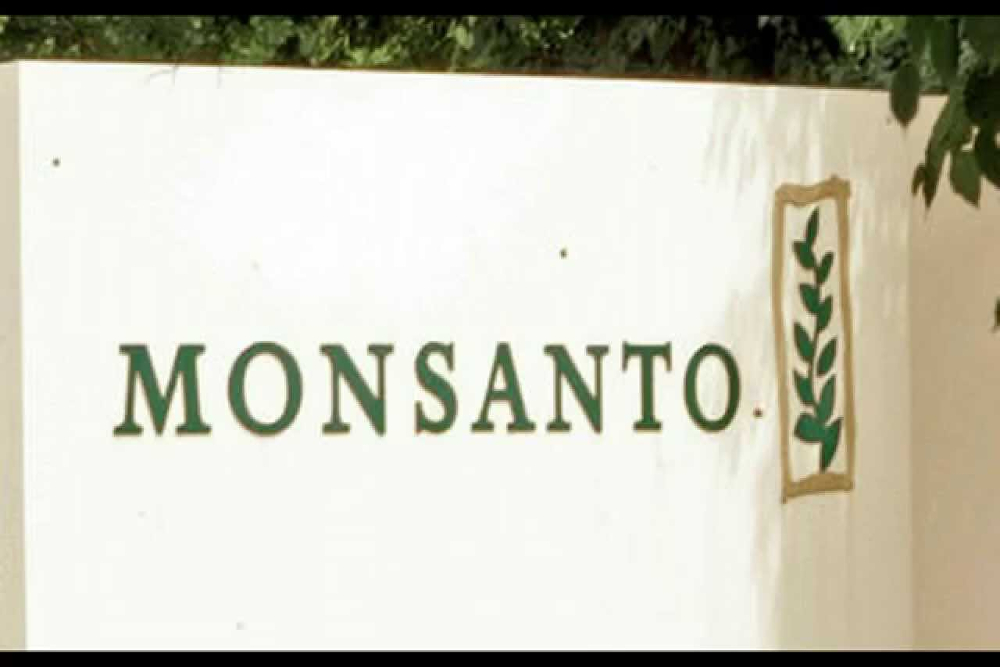
Peeling Back the Curtain on Monsanto
For nearly 30 years, Carey Gillam has worked as a business reporter covering corporate America, the last 17 of those with Reuters, where she specialized in writing about food and agriculture. In that role, she gained a reputation for her in-depth skeptical eye on issues involving GMO (genetically modified organisms) crops and the pesticides used with them. Her award-winning coverage has taken her across the country, visiting farmers and ranchers and exploring the high-tech laboratories and corporate offices of some of the largest agribusinesses corporations in the world.
May 10, 2016 | Source: The Huffington Post | by Paul Thacker
Editor’s note: Carey Gillam, a former reporter for Reuters and other news outlets, is now a researcher-writer for U.S. Right to Know, an independent nonprofit whose largest funder is the Organic Consumers Association. To support her work, click here.
For nearly 30 years, Carey Gillam has worked as a business reporter covering corporate America, the last 17 of those with Reuters, where she specialized in writing about food and agriculture. In that role, she gained a reputation for her in-depth skeptical eye on issues involving GMO (genetically modified organisms) crops and the pesticides used with them. Her award-winning coverage has taken her across the country, visiting farmers and ranchers and exploring the high-tech laboratories and corporate offices of some of the largest agribusinesses corporations in the world.
But in recent years, Gillam’s work has turned “controversial” in the eyes of some. Operating through sometimes murky social media channels, these critics have targeted Gillam along with others who raise question about GMO food, the chemicals used on them, and the companies that sell both. In some cases, these critics have ties linking them to the agribusiness industry. As GMO labeling efforts have taken off across the country, and become the subject of debate this month in the U.S. Senate, these attacks heightened.
She recently left Reuters to work as research director for U.S. Right to Know, a small nonprofit funded largely by the Organic Consumers Association with the mission of bringing “truth and transparency” about food policy to consumers. Over the last year, U.S. Right to Know has been making waves in the media, filing Freedom of Information Act requests at universities that have exposed cozy ties between some seemingly independent scientists and the biotech industry. Stories based on USRTK’s research have appeared on the front page of the New York Times, in the Boston Globe and at Bloomberg. In March, Chicago Public Radio reported on documents USRTK made public, regarding professor Bruce Chassy at the University of Illinois, who has been failing to disclose money he has received from Monsanto.
From her home in the key farm state of Kansas, Gillam spoke with me about her coverage of these hotly debated issues and how pressure from Monsanto has gotten much uglier in recent years. Our conversation follows, condensed and edited.
You’ve been covering agriculture for almost two decades. When did you first start to feel pressure from Monsanto when covering GMO crops?
Pressure from Monsanto began when I first started covering them around 1999 or 2000, and it wasn’t even GMO crops. At the time Monsanto was in transition from an industrial chemical company involved in litigation with PCBs to an agrichemical and biotech seed company. They had some GMO crops but they had only been out a few years. They also had the pesticide glyphosate or Roundup, and they were marketing bovine growth hormone for dairy cows. There were a lot of questions about a lot of this stuff.
Monsanto does what all companies do to reporters: They get angry; they call your boss; they ask for a retraction or a clarification. But they were more aggressive than most companies. They’d call me at home, because they had my cellphone, and accuse me of being biased. They wanted to know if I had organic milk in my refrigerator, for instance. [Laughs] What kind of food did I feed my children. It was always a little odd.
They were dubbed “Monsatan” by many back then. But things evolved as their communications team become more media savvy and began inviting people to their headquarters and working to burnish a more favorable image. Then around 2012, as GMO labeling of food was being considered in California they became much more strategic.
The beginning of the real ugliness began with the GMO labeling movement, and the California vote. A leading industry representative told me they couldn’t keep fighting state by state. They had to win the issue nationally. An industry coalition was formed; the website GMO Answers was put together with the help of Ketchum P.R. to refute concerns that were mounting around the country about GMOs.
